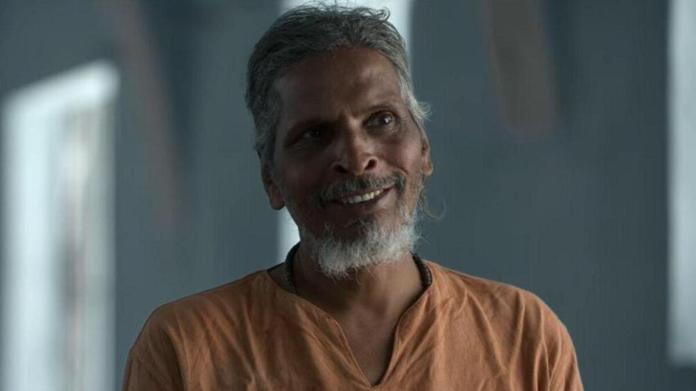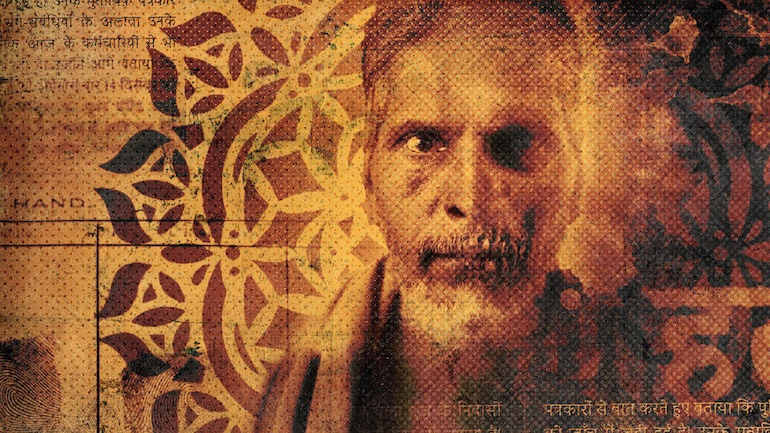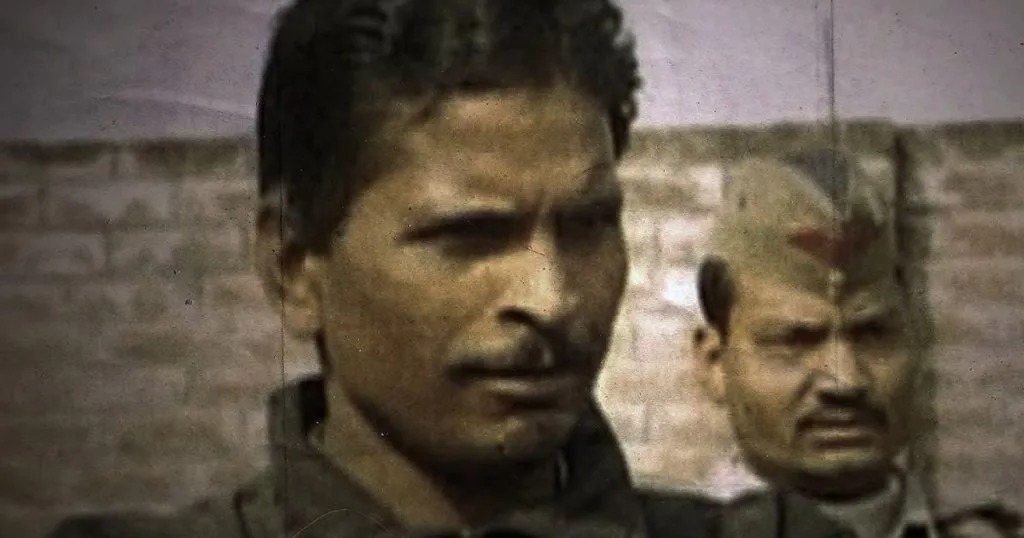Ten years ago, the general public did not watch documentaries as a kind of entertainment. The secret was unlocked by Netflix, who turned it into a thriving market. “Indian Predator: The Diary Of A Serial Killer” proves once more that, when done well, documentaries can captivate you, amuse you, and at the same time elicit some deep thoughts from within you. Dheeraj Jindal directed and Sudeep Nigam wrote the documentary. I myself worry that there might come a time when the drama becomes less intense. Even in this documentary, there were moments when you almost got the impression that the creators were trying to sensationalise things through the use of dramatic background music and cinematic images, but they managed to keep the documentary’s integrity.
In typical Netflix fashion, “Indian Predator: The Diary Of A Serial” first narrates the events before taking you inside the killer’s head. You gain access to the intricate workings of a criminal mind. Finally, it presents you with a number of hypotheses and conclusions. It claims to be unbiased, but very discreetly and passively picks out one theory from the rest that it wants you to accept while gracefully allowing you the chance to think it out on your own. In order to determine whether justice was carried out or if the serial murderer was able to use the inadequacies of the Indian legal system, let’s try to grasp the nature of the crime, why it was committed, what the motivation behind it was.
Who Is Raja Kolander?
In the year 2000, on December 13th, a journalist by the name of Dheerendra Singh vanished. He had relocated to Prayagraj for employment, and was scheduled to be at his village of Bairi that day. Prayagraj is about a 3-hour journey away. His brother Veerendra Singh and his wife Phulan Devi became concerned about him when they returned to the hamlet. They patiently awaited it for a few days, although they weren’t particularly optimistic. Dheerendra was a reporter for the prestigious publication “Aj.” In that year, preparations were being made for the Kumbh Mela, the world’s biggest human gathering. The fact that a journalist had vanished out of the blue and the police were baffled about what had transpired quickly became the talk of the town. It gave a bad impression of the city and its government. There was increased pressure on the police to provide quick answers. They didn’t want the pilgrims to believe that there was a criminal roving free. The Kydganj police station’s SHO, Shri Narayan Tripathi, was promptly alerted to the situation and launched an investigation.
To find out who Dheerendra was in communication with just before going missing, the phone records of the man were obtained. Cellular phones weren’t common back then. Few people had mobile phones, and thieves were also unaware of the technology and unsure of how to utilise it wisely without being discovered. One of the most recent phone calls was made to a landline. It belonged to Ram Niranjan, also known as Raja Kolander, whose spouse was a native of Dheerendra’s hamlet. Phulan Devi, his wife and a district councilwoman, had answered the phone and informed Narayan Tripathi that she resided someplace close to Ramsagar Lake. Veerendra visited that address and enquired of Phulan Devi whether her brother had paid a visit. Phulan Devi was previously familiar to Veerendra and his entire family. Officer SN Tripathi noticed a vehicle approaching him as he was standing on the street just outside the village at the time. Raja Kolander had the same SUV (a Tata Sumo). He was taken into custody by the police for additional interrogation. Vakshraj, Kolander’s brother-in-law, was also in the SUV with him. When originally questioned, he immediately refuted all charges. Vakshraj was sporting a pair of shoes that appeared pricey but only cost a few hundred dollars, according to him. Even more reason to be suspicious of the police personnel. Before daybreak, at around three in the morning, Raja Kolander admitted to killing Dheerendra Singh. However, the police now required proof that the individual had committed the crime because there was a chance that, if brought before a magistrate or lower court, he may deny it. Raja Kolander operated numerous illegal and shady side companies. He was worried that Dheerendra would expose him because he was a journalist. At his pig farm, he and Vakshraj planned his murder before shooting the journalist dead in the head. Raja ruthlessly dismembered Dheerendra’s body and scattered its components over the room. His decapitated head was discovered in Bansagar Lake, but the rest of him was buried just before the city of Rewa.
Working as a grade four employee at the Central Ordnance Depot in Chheoki was Raja Kolander. His lifestyle and his compensation were incompatible. He had a pig farm and a few four-wheelers, which made it quite evident that he did not rely entirely on his paid employment. His family was also detained by the police. To obtain information, they started torturing them. Finally, they were able to locate Dheerendra’s various body parts as well as his blood-stained clothing. The last rites for Dheerendra Singh were performed in his village. As a mark of protest, the local media community asked that Dheerendra’s head be burnt in Prayagraj. Veerendra Singh found it incomprehensible that his brother had been killed and given such a terrible ending. At the moment, Dheerendra’s wife was expecting a child. A few years after her husband was slain, she also had an accident and passed away. On the other side, Raja Kolander aided the authorities in their inquiry fairly blatantly, as if he had nothing to conceal. The cops proceeded to his piggery farm to get the murder weapon, a locally produced handgun. They coincidentally discovered a red diary with the writing “Raja’s Diary” on it. They read what was written in it and were astounded beyond belief. There were 14 names given, and Dheerendra Singh’s last name was one of them. The police immediately realised that they had unintentionally detained a serial killer who had managed to manipulate the system and work in secret.
Why Did Raja Kolander Kill 14 People? Did He Practice Cannibalism?
Kolander’s objectives and driving forces must be understood in the context of that time’s sociopolitical climate. Kolander belongs to the Kol tribe. He could observe that numerous political organisations were now battling for the rights of downtrodden castes that lacked representation in the state assembly and the parliament. The Samajwadi Party and Bahujan Samaj Party were attempting to incite an uprising among the underclass. The Samajwadi party also gave a ticket to Phulan Devi, the infamous bandit queen. Kolander wished to be a part of the wave of transformation that was taking place. He had aspirations of being well-known in politics and moving up the food chain. Ram Niranjan changed his name to Raja Kolander and performed those horrible atrocities, according to Dr. Rajat Mitra, a clinical psychologist, and Badri Narayan, an anthropology, who had watched the case. Each of them had their own views and analyses on why this happened.
Kolander was a man of metaphors. He sought to satisfy the need hidden behind each metaphor. He didn’t purchase an SUV because he enjoyed its characteristics; rather, at the time, the vehicle served as a kind of status symbol. In general, it was owned by numerous politicians and influential people. Kolander frequently made loans to individuals—not because he wanted to earn interest, per per, but rather because he wanted to feel superior to others. Rajat Mitra claims that after examining the man’s behavioural patterns, he was able to determine that he most likely had an antisocial personality disorder. Kolander never got into a fight with anyone. No matter how serious the situation became, he never got into a disagreement. Raja Kolander believed himself to be a victim in his own made-up story. He was a self-declared emperor who was a revolutionary rather than a criminal. His three children were given the names “Andolan,” “Adalat,” and “Jamanat,” which, when translated into English, respectively, signify “Revolution,” “Court of justice,” and “Bail.” In order to make his wife’s name appear more authoritative, he also modified it. This wasn’t something you saw very frequently, mind you. He thought himself to be a crusader and the chief of his tribe, according to his own story. He lacked empathy, had little regard for the criminal justice system, and secretly thought that by killing the victims, he was doing them a favour. He believed that by doing what he did, he was uplifted the oppressed and bringing society back into equilibrium.
His children claim that he was not the kind of person who would even lift a finger, much less kill someone in the cold. Naturally, he frequently experienced conflicts between reality and his own make-believe world, which is why he would become restless. Only because Raja Kolander gave him a sense of authority had he altered his name. Ram Niranjan didn’t sound particularly powerful or impressive as a name. He also desired recognition as the leader of his own tribe. Raja exerted every effort to make that happen. Raja Kolander claims that he never killed those people. He claimed that the police had set him up because they were looking for a scapegoat. He claimed that some of the people whose identities the police had identified as his victims were still alive. He claimed that the media trial had led to a distorted and undemocratic public view. It’s possible that Raja Kolander had delusions and made up these imaginary notions that he genuinely believed to be true. However, it’s possible that he was extremely cunningly attempting to conceal the truth even though he may have recognised what was correct and what wasn’t. Comparing his testimony to the reports of his children, family, and acquaintances, it was evident that there were many inconsistencies. For a split second, if you had heard him speak independently and without knowing the context, you could have agreed with him. He had a knack with words and expressed himself with a lot of conviction.
He allegedly used to boil his victims’ brains and ingest the stock. He believed it to be a means by which he could absorb the wisdom and character of the person whose brain it was. There were rumours that he had once engaged in cannibalism, but there was never any solid proof to support them. He had murdered a guy solely to gain access to his brain stock, which would allow him to use his purported psychic powers. There was also another side to the story at this point. Over the years, the “Kol” tribe has experienced a great deal of injustice and tyranny. People had preconceived notions about them that were stereotypes. They were accustomed to drinking wine and eating meat and other non-vegetarian foods. People believed that this tribe consumed human meat while they were living in the forests. This was merely an assumption that may have been instrumental in the public perception of Raja Kolander as a man-eater. But even if he wasn’t a man eater, there was no doubt about the fact that he was lying. The courts were unable to establish sufficient proof that Kolander engaged in cannibalism.
Final Words: Where Is Raja Kolander Now?
Raja Kolander was charged with killing 14 people in 2000, but only three of the charges led to his conviction and life sentence in 2012. A few victims’ skeleton remains were discovered buried in his piggery farm, and as was already revealed, police officers also uncovered Dheerendra Singh’s body there. According to Kolander, the SUV he was in possession of was also taken. Manoj Singh and Ravi Shrivastava, the conductor and driver, had also been killed by him. In the higher courts, Kolander contested the conviction; the case is currently pending. An activist named Hansraj Kol claimed that he was being victimised by the system and powerful upper caste individuals. The fact that the tribe had to deal with many preconceptions held by the populace did not excuse his behaviour, though. Experts believe that a man so dangerous should be kept in jail till the time he becomes physically incapable of engaging in any such activity once again. Raja Kolander is still serving his sentence in Unnao Jail in Uttar Pradesh, though he strongly denies every charge and spends a majority of his day praying.



